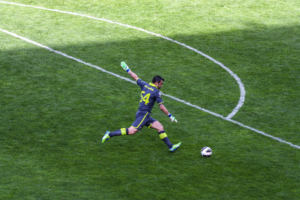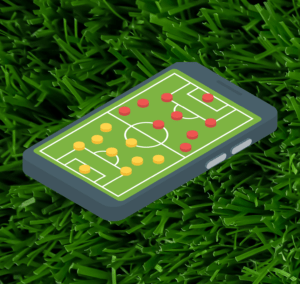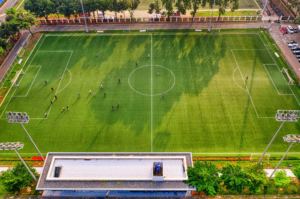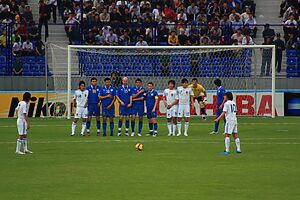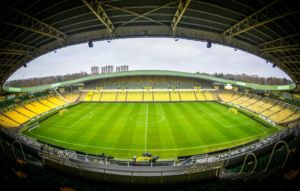One important role in football is the center-back. Center-backs sit at the heart of the defense. Their main priority is defending the goal. However, center-backs need to adapt to different instructions from different team setups. Despite common practices to play bigger players in the center-back role, center-backs can be of any size. And because they can be of any size, they can defend the goal in their own way.
Additionally, to be successful center-backs must communicate with their defensive partners. They must be in constant coordination with the full-backs and goalkeeper to maintain a solid defensive line. A good defensive line moves together and can catch opposition players offsides. In addition, the center-backs control how high up the field the defensive line is. The further up the field the defensive line, the smaller the space the opposition has to maneuver.
Stopper
The stopper is a center-back who steps up his line to put pressure on the ball. When an opposing player breaks through the midfield, the stopper is the first player expected to step. Also, the stopper may be responsible for challenging aerial balls that land between the midfield and defensive lines and is sometimes employed to win aerial challenges during goal kicks.
This role is usually paired with a sweeper to provide cover for the gap left by the stopper when he steps up.
Sweeper / Cover
The sweeper is a center-back who stays on the last line of defense. The sweeper controls the team’s defensive shape in offside traps. Depending on aerial ability, the sweeper may be used to tightly mark the opposition’s forward or biggest aerial threat in crosses or set pieces.
In a sweeper/stopper tactical setup, the sweeper has to cover the gap left by the stopper when the stopper applies pressure on the ball. A defensive midfielder or libero can also fill the gap to help the sweeper.
Traditional Center Back
The flat center back is a mix of a stopper and a sweeper. In a flat defense, the center-backs are responsible for both roles. A good manager assigns good match-ups in marking man-to-man or employs a zonal marking. In zonal marking, each center-back is responsible for his “half” of the field split at the center of the goal. For example, a center-back in a flat 4-defender setup that plays on the left will be responsible for all threats coming from the left side of the field.
Libero
The modern Libero is a mix between a center-back and a defensive/holding midfielder. The libero is employed as either a part of the defense or as part of the midfield line. When playing as part of the defense, Liberos are usually used in 5 defender or three center-back formations.
When a libero plays as a center-back, he or she is given the responsibility of building up the play from the back in addition to their defensive duties. The libero is given the freedom to push up with the attack slightly more than a center-back would and usually finds himself in the hole between midfield and the defense. Good liberos drop back into the defensive line to collect the ball and pass it on to the midfield. This version of the libero is very limiting as his positioning defaults to the center-back position. As we will see later on, the defensive midfield role has variations on this role.

